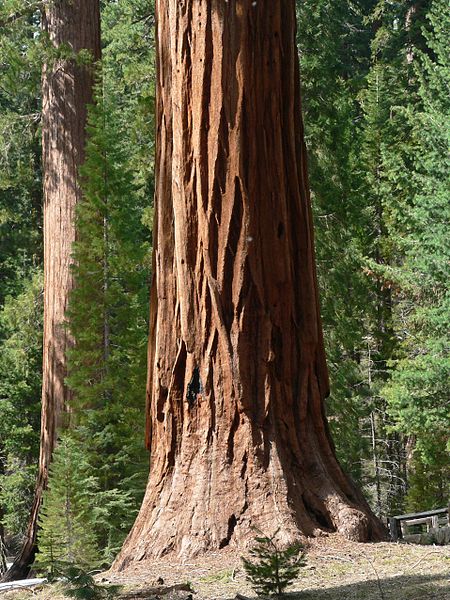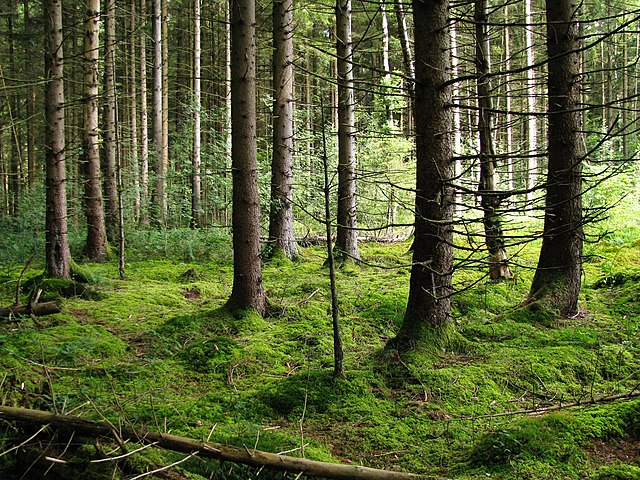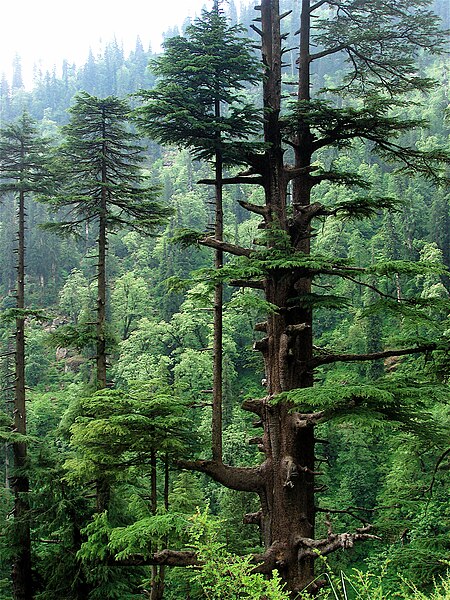Ecology of the Sierra Nevada
The ecology of the Sierra Nevada, located in the U.S. states of California and Nevada, is diverse and complex. The combination of climate, topography, moisture, and soils influences the distribution of ecological communities across an elevation gradient from 500 to 14,500 feet. Biotic zones range from scrub and chaparral communities at lower elevations, to subalpine forests and alpine meadows at the higher elevations. Particular ecoregions that follow elevation contours are often described as a series of belts that follow the length of the Sierra Nevada. There are many hiking trails, paved and unpaved roads, and vast public lands in the Sierra Nevada for exploring the many different biomes and ecosystems.
Subalpine forest at the base of Temple Crag
Forest in the foothills of the Sierra Nevada
Yosemite Valley is in the Lower Montane Forest.
Giant sequoia tree, Mariposa Grove, Yosemite National Park
Temperate coniferous forest
Temperate coniferous forest is a terrestrial biome defined by the World Wide Fund for Nature. Temperate coniferous forests are found predominantly in areas with warm summers and cool winters, and vary in their kinds of plant life. In some, needleleaf trees dominate, while others are home primarily to broadleaf evergreen trees or a mix of both tree types. A separate habitat type, the tropical coniferous forests, occurs in more tropical climates.
A pine forest is an example of a temperate coniferous forest
Carpathian montane conifer forest, Slovakia.
Forest south of Munich
Cedrus deodara in the Western Himalayan subalpine conifer forests,








